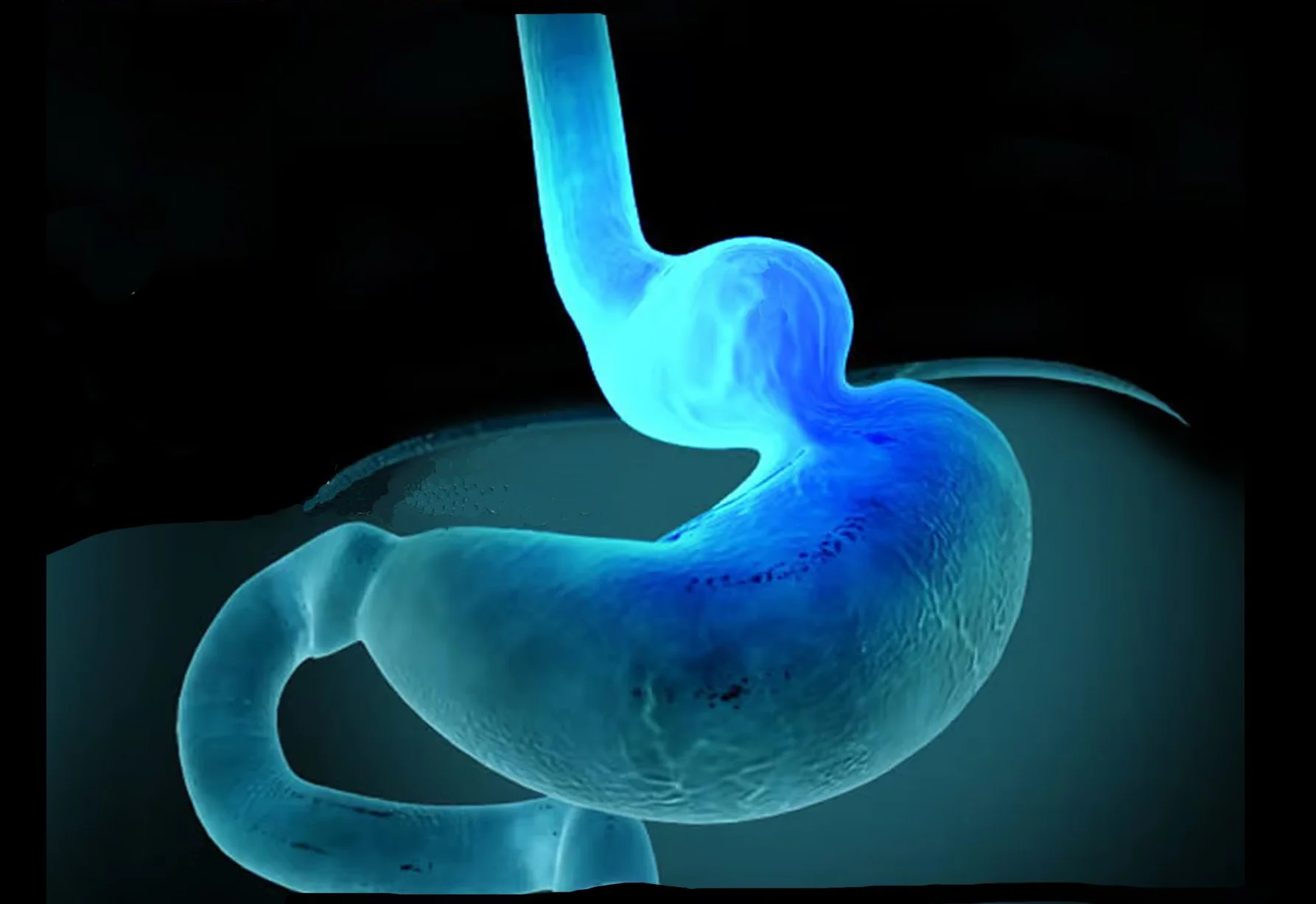A hiatal hernia occurs when part of the stomach moves up into the chest through a widening of the esophageal hiatus. The esophageal hiatus is the natural opening in the diaphragm that allows the esophagus to enter the abdomen.
SLIDING HIATAL HERNIA
Most hiatal hernias are small and are called “sliding hernias”. They typically cause heartburn or gastro-esophageal reflux disease (GERD). They do not always require surgical repair. If an anti-reflux surgery is desired, the hernia is repaired as part of this operation.
The repair consists of bringing the stomach back down into the abdomen, then tightening the widened esophageal hiatus with sutures. An anti-reflux procedure, such as a fundoplication or a Linx is then added. We always perform this surgery laparoscopically or robotically and patients are discharged the same day or the next day.
PARAESOPHAGEAL HIATAL HERNIA
Some hiatal hernia can become very large where a large portion of the stomach, or even the entire stomach, herniates into the chest; these are called “paraesophageal hiatal hernias”. These hernias may not cause any symptoms or may cause chest pain, indigestion, respiratory symptoms, etc. They also may become life threatening if the herniated stomach twists unto itself (“gastric volvulus”). These hernias should usually be repaired in order to avoid these potential complications.
The surgery consists of getting to stomach out of the chest and into the abdomen. The esophageal hiatus which is very wide in these cases is then narrowed down with sutures. We also often use a dissolvable mesh to strengthen the repair and reduce the chance of the hernia recurring. We often add an anti reflux procedure such as a fundoplication or a Linx, or sometimes just perform a gastropexy (which means securing the stomach in the abdomen with sutures). We always perform this surgery laparoscopically or robotically and patients are discharged the the next day.

